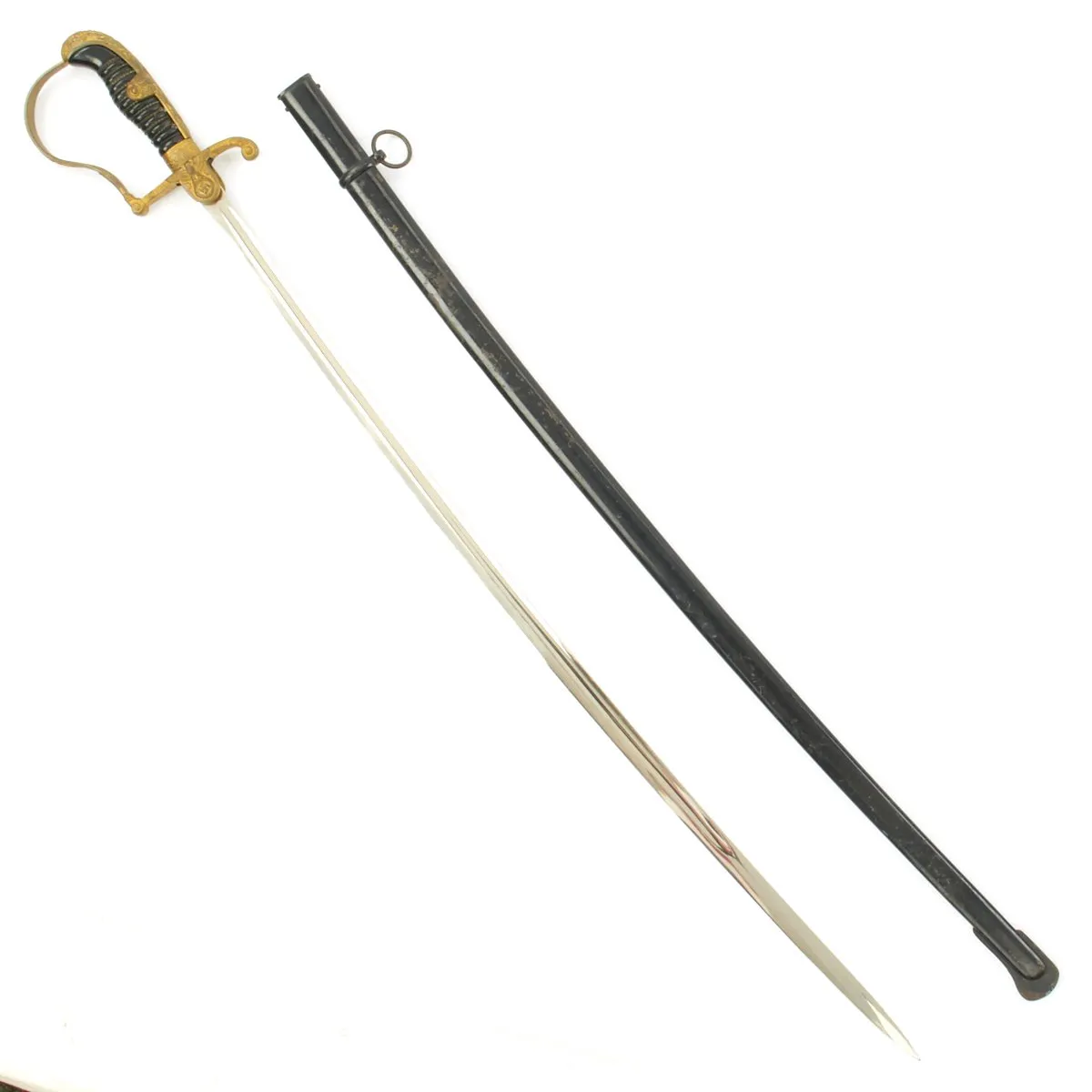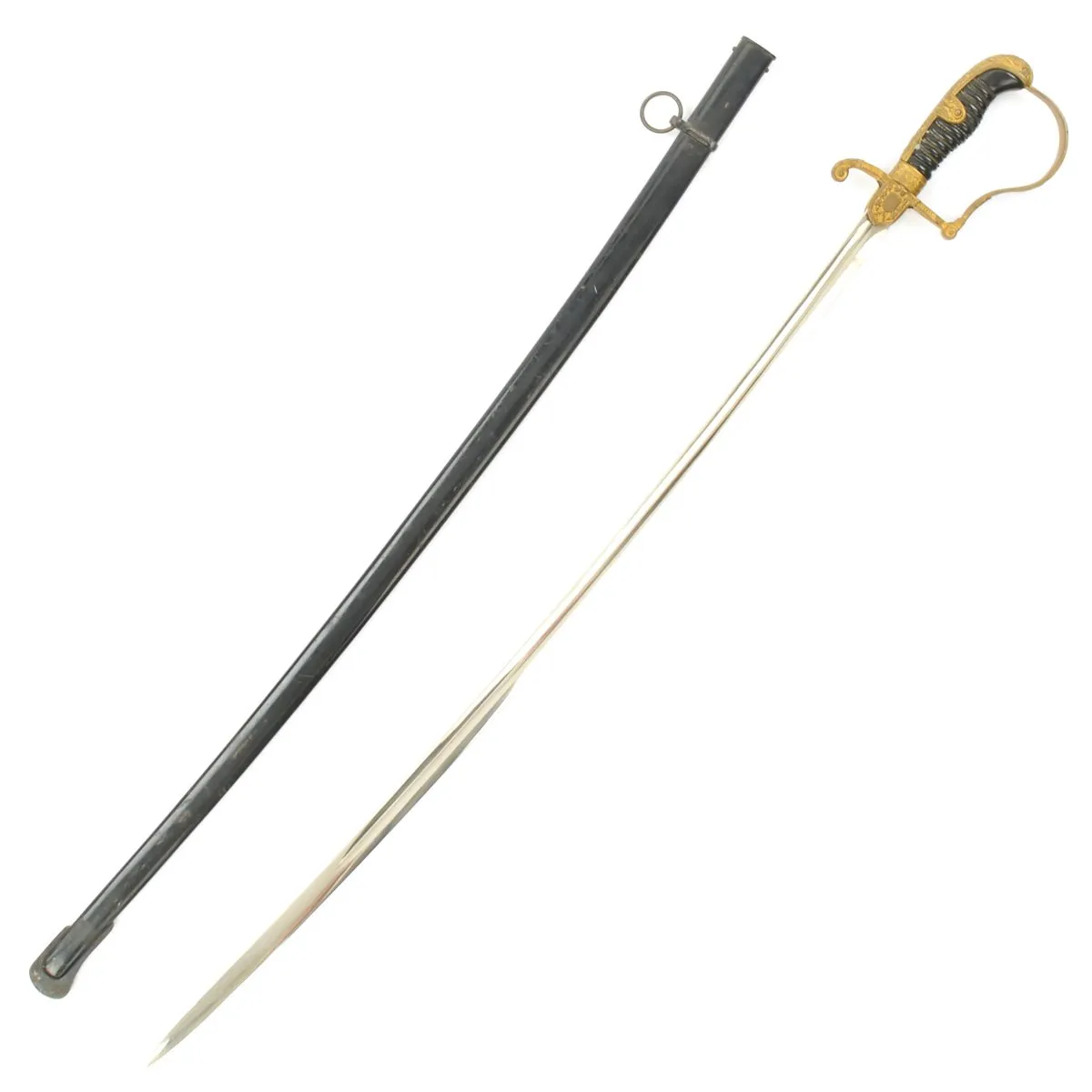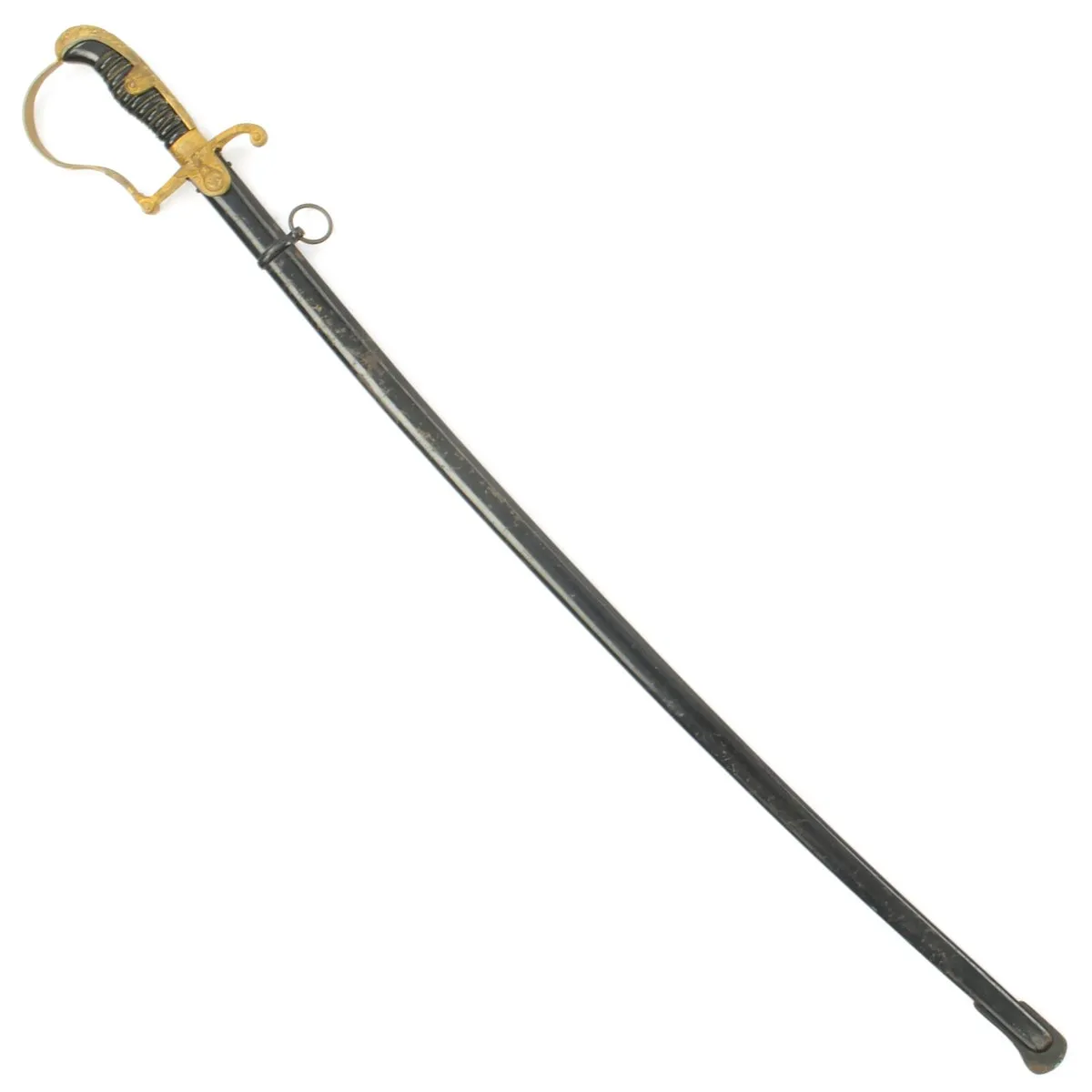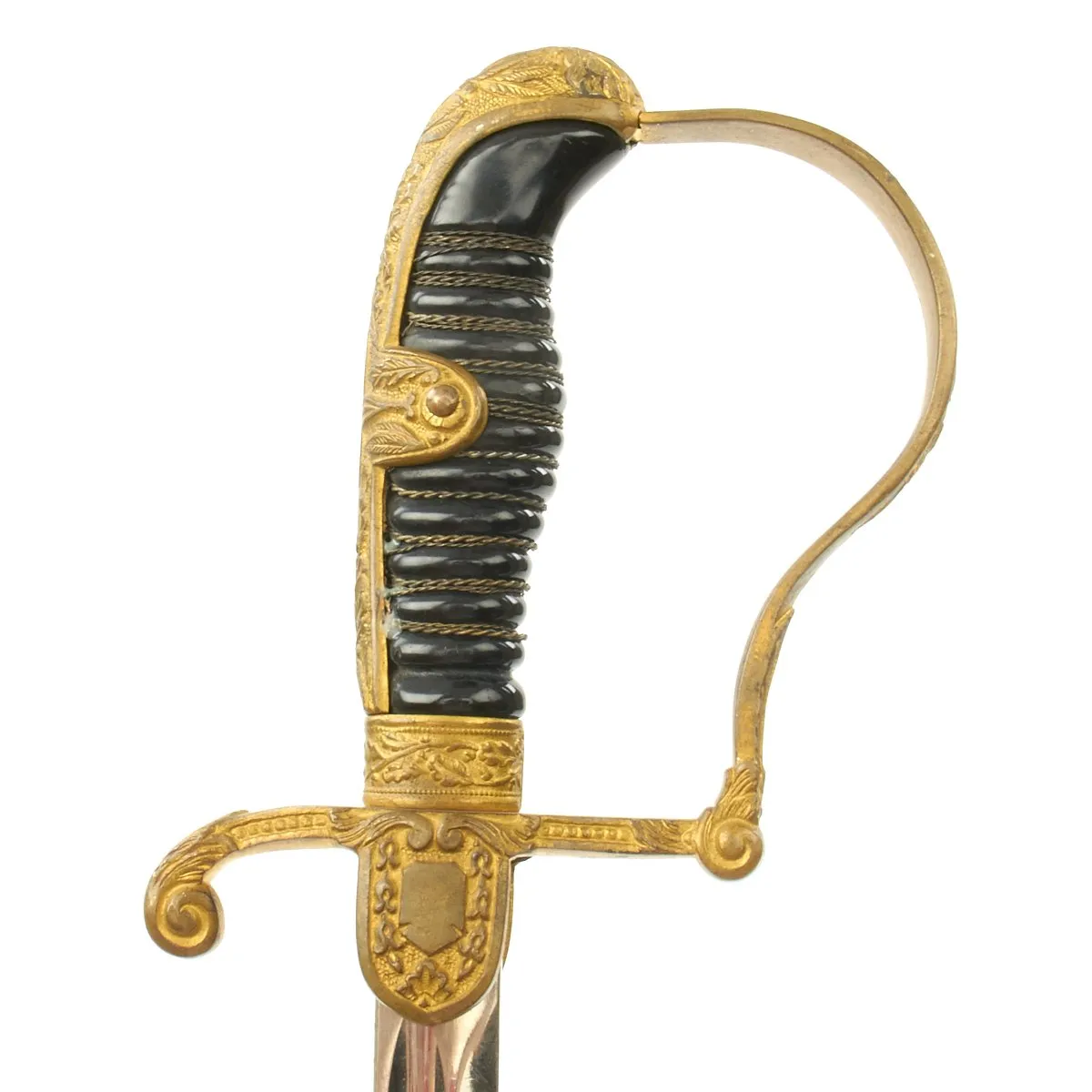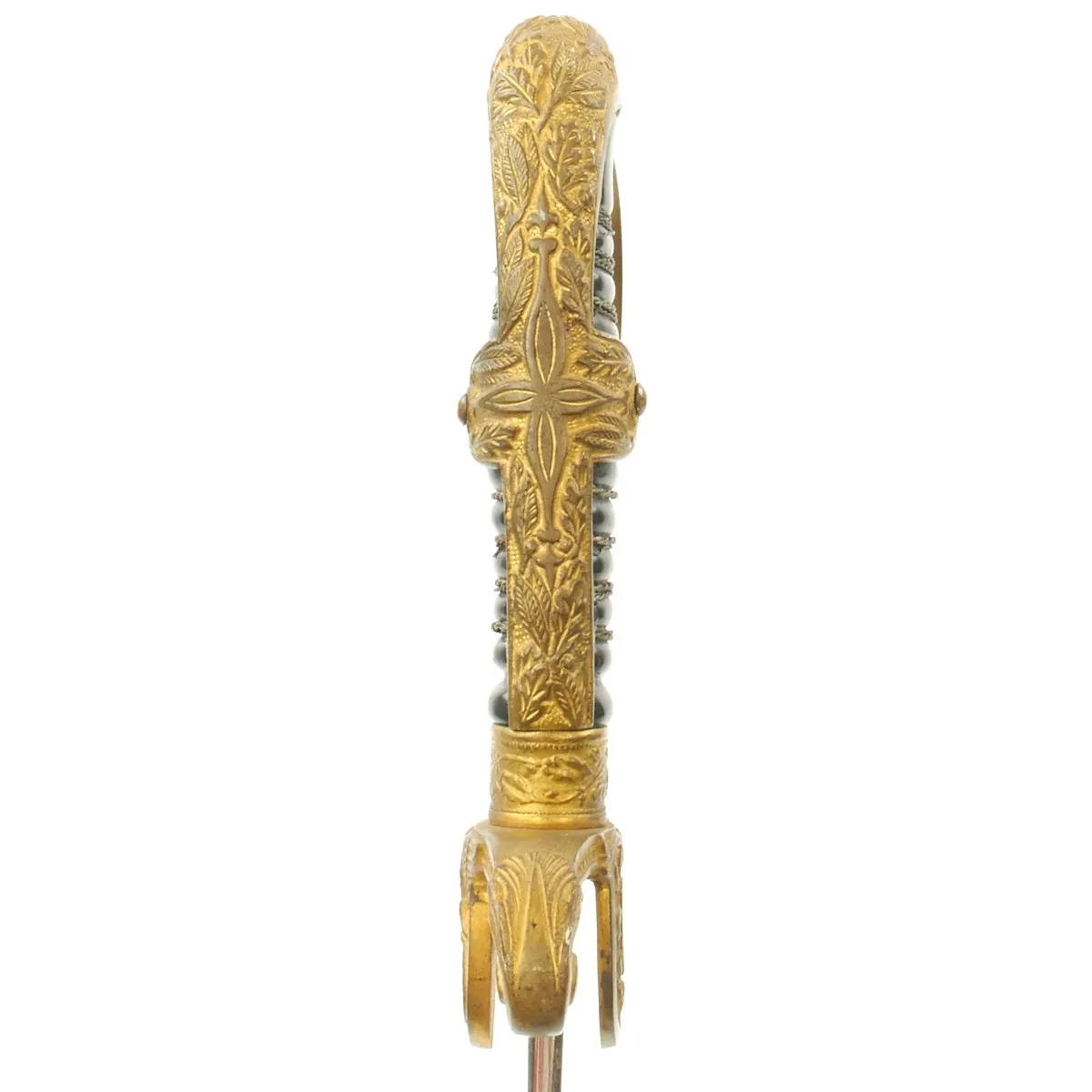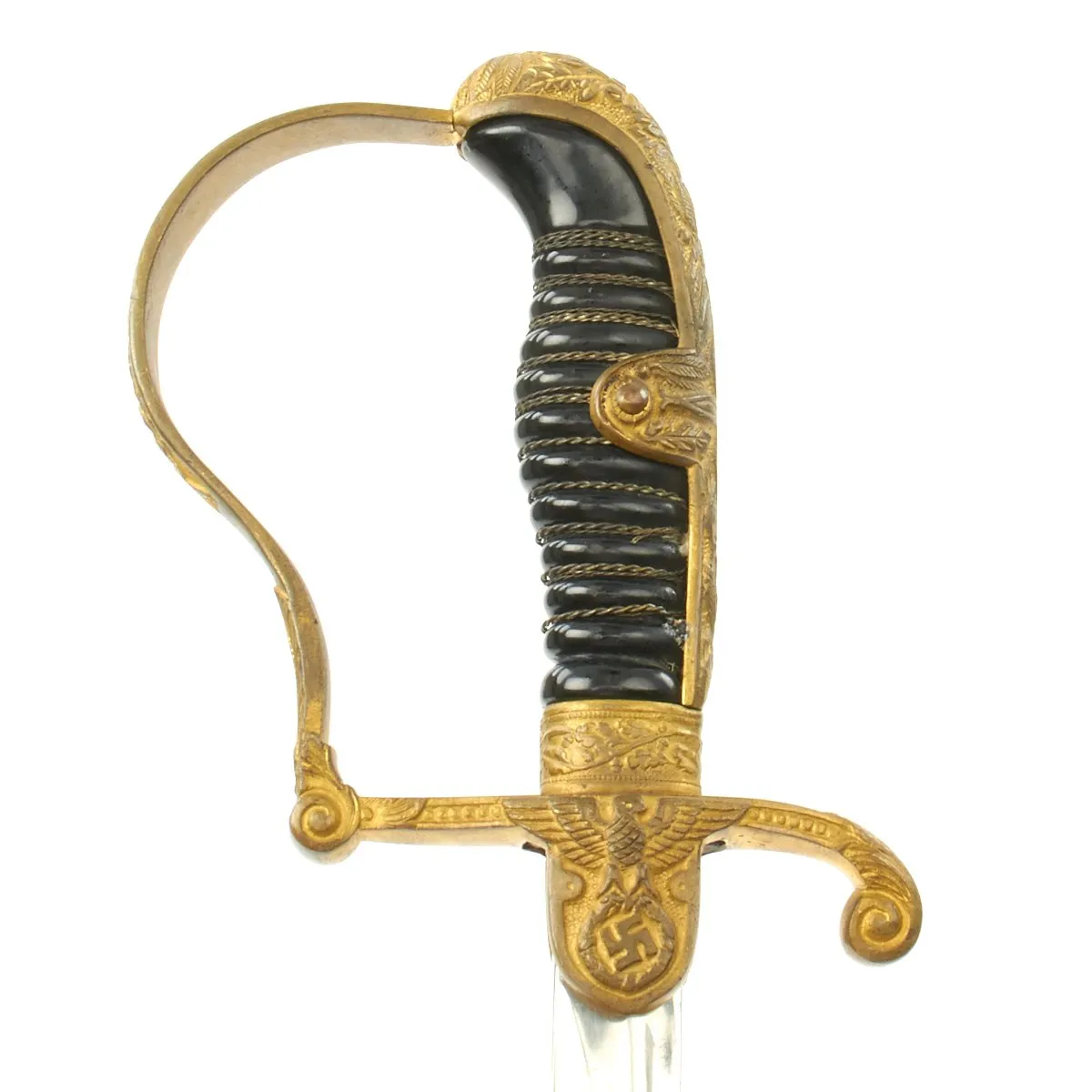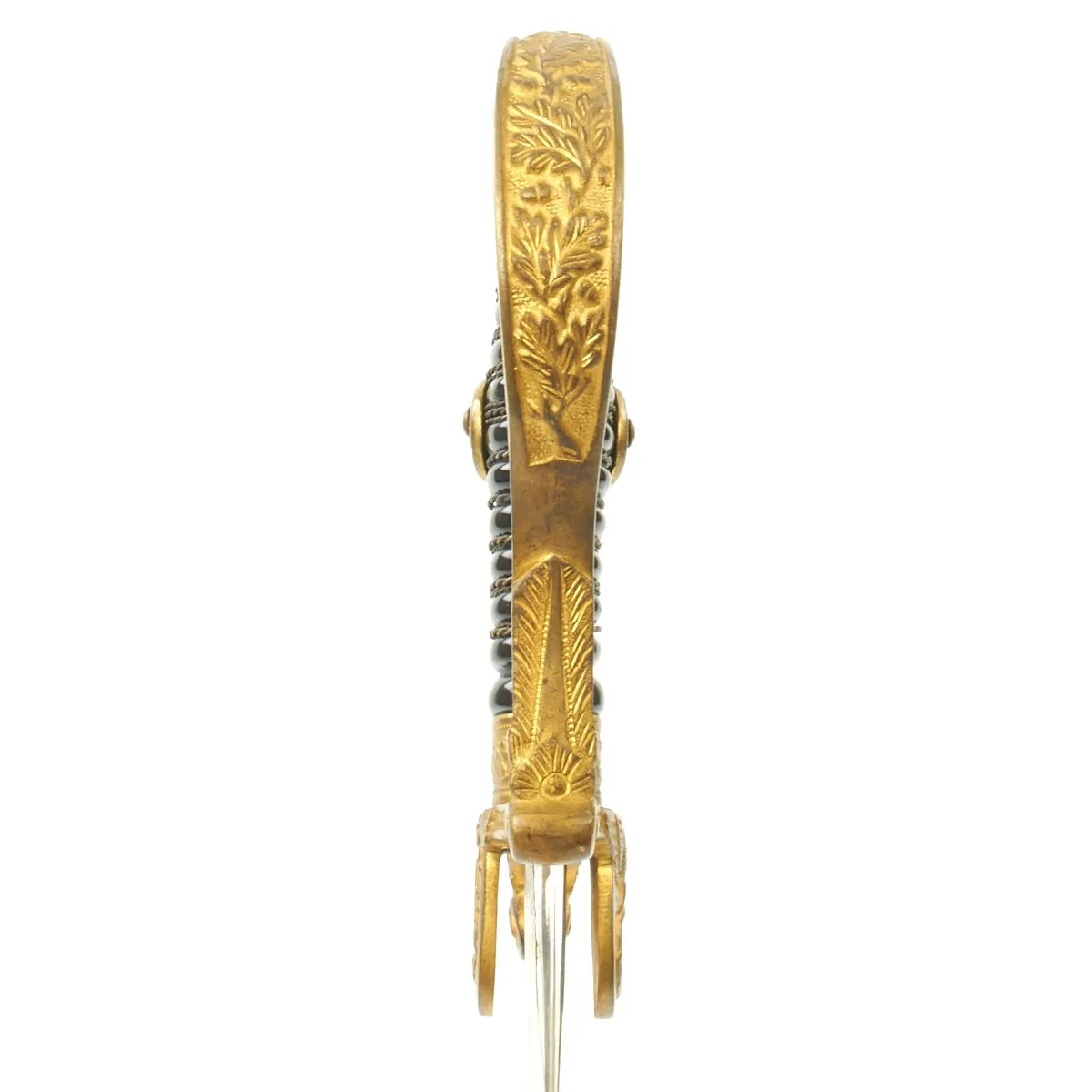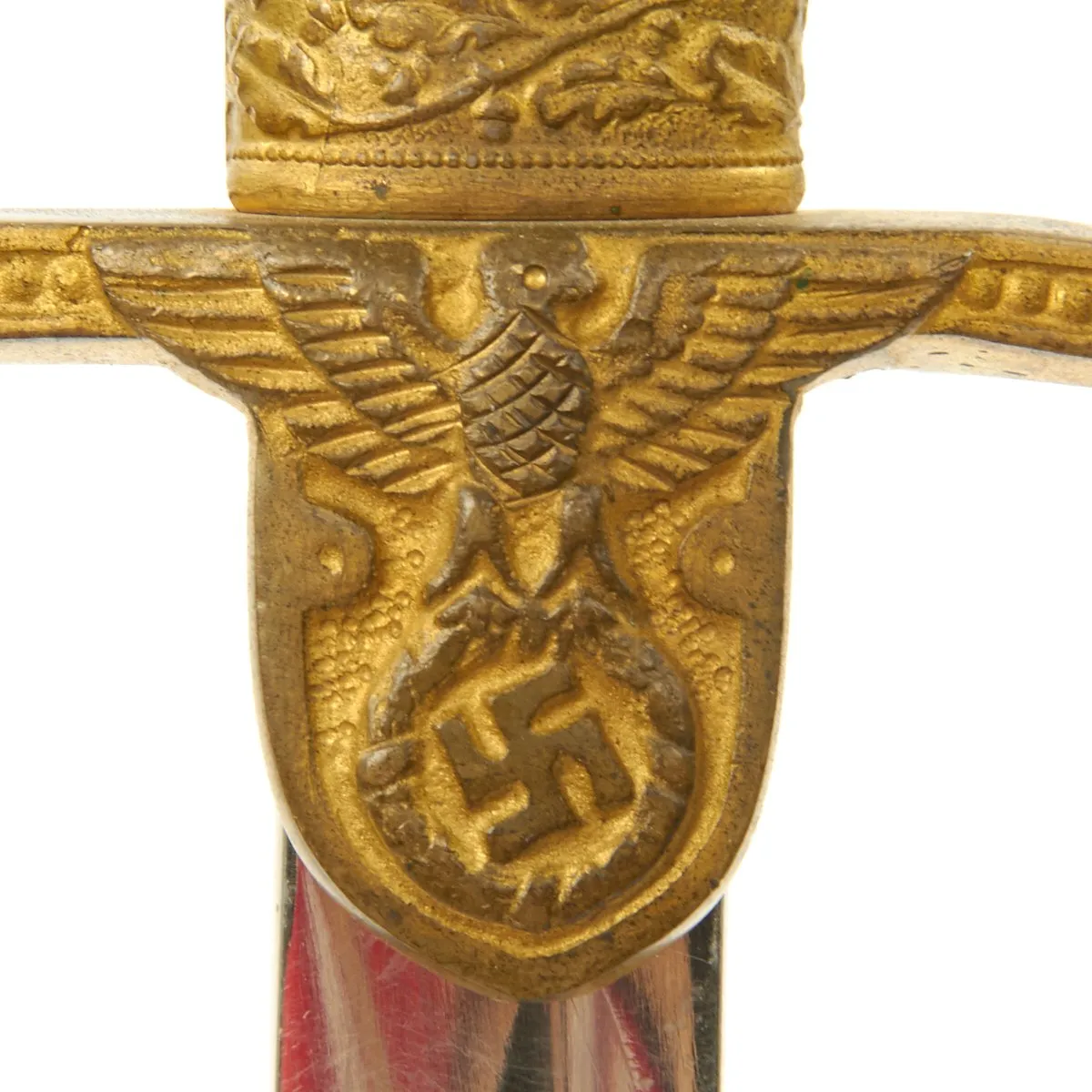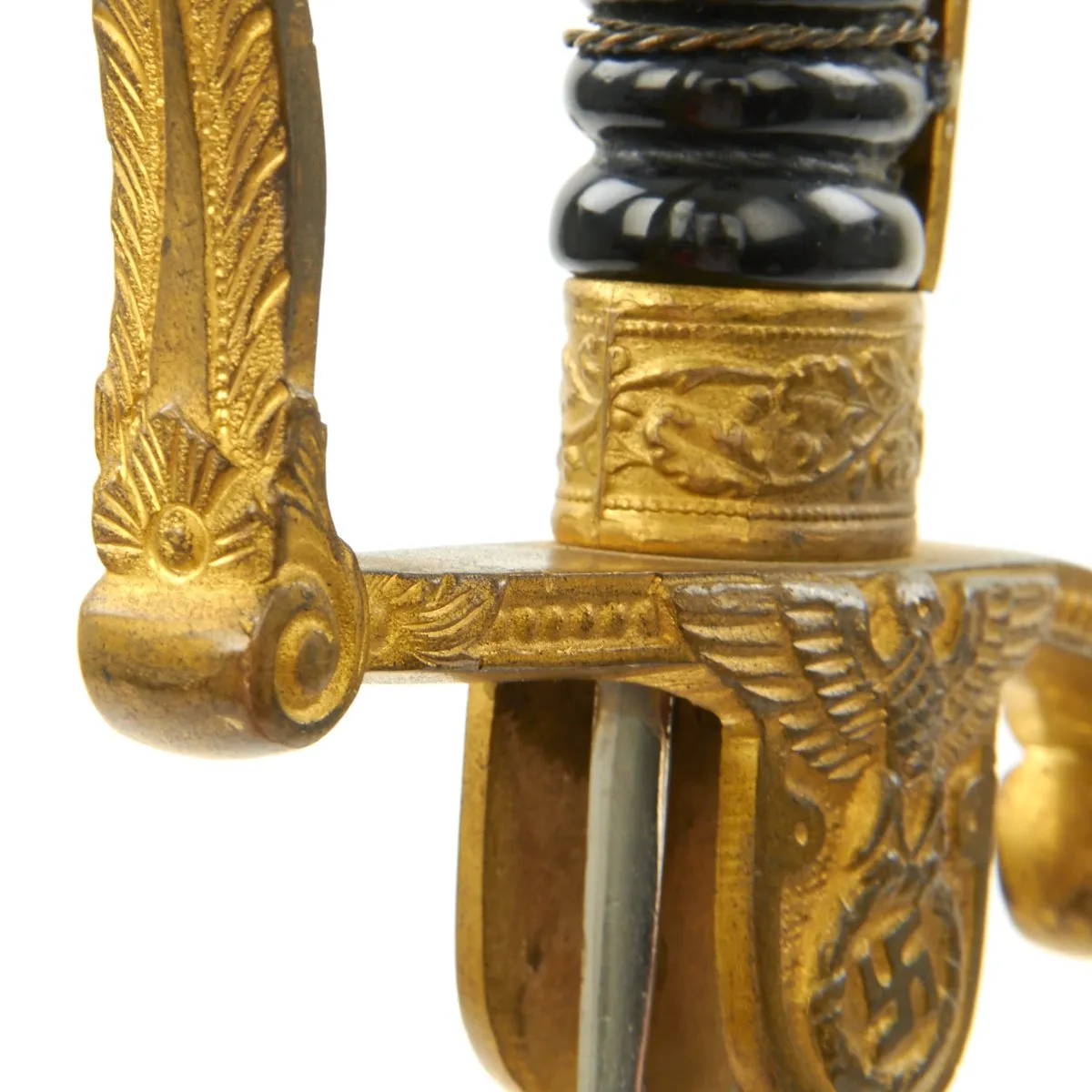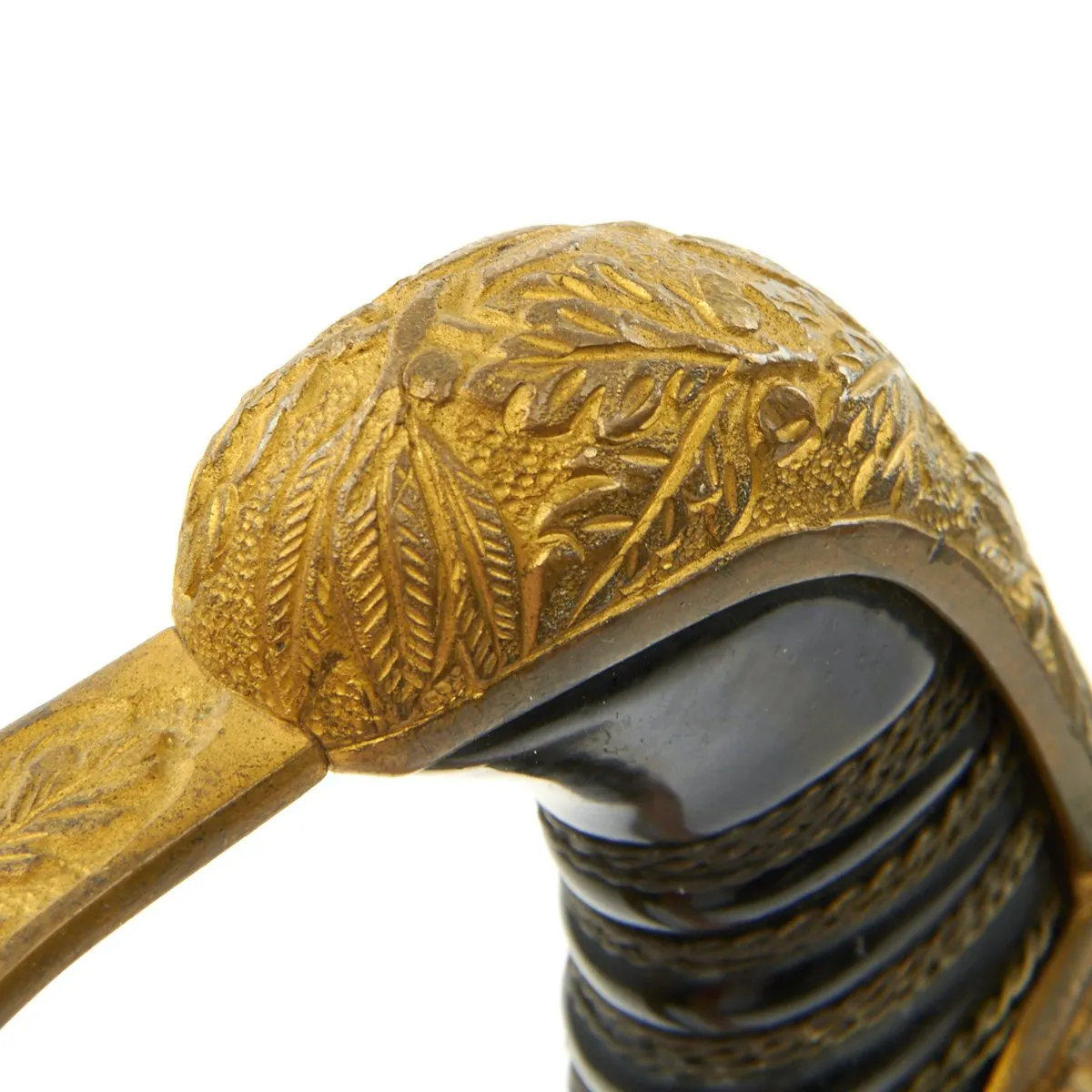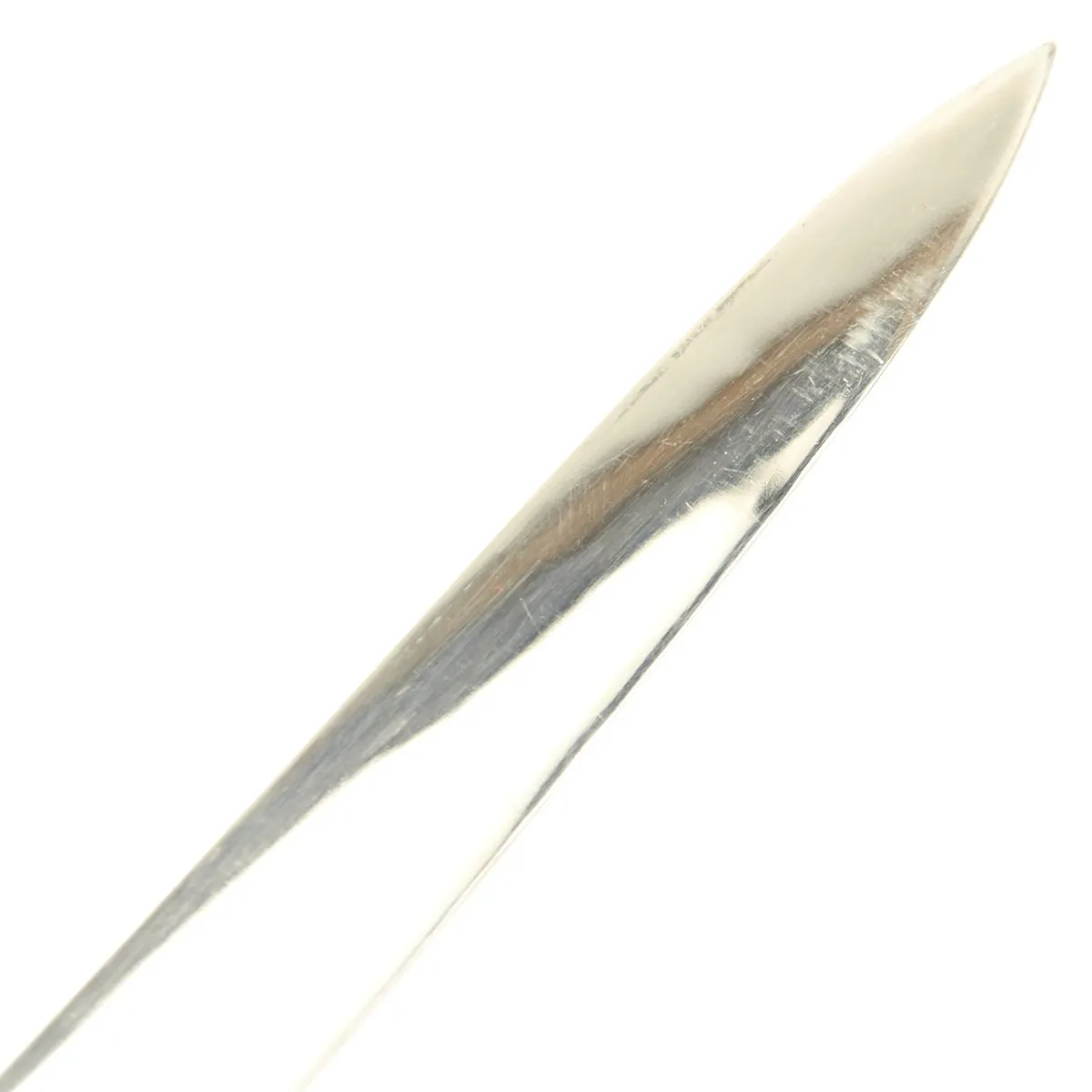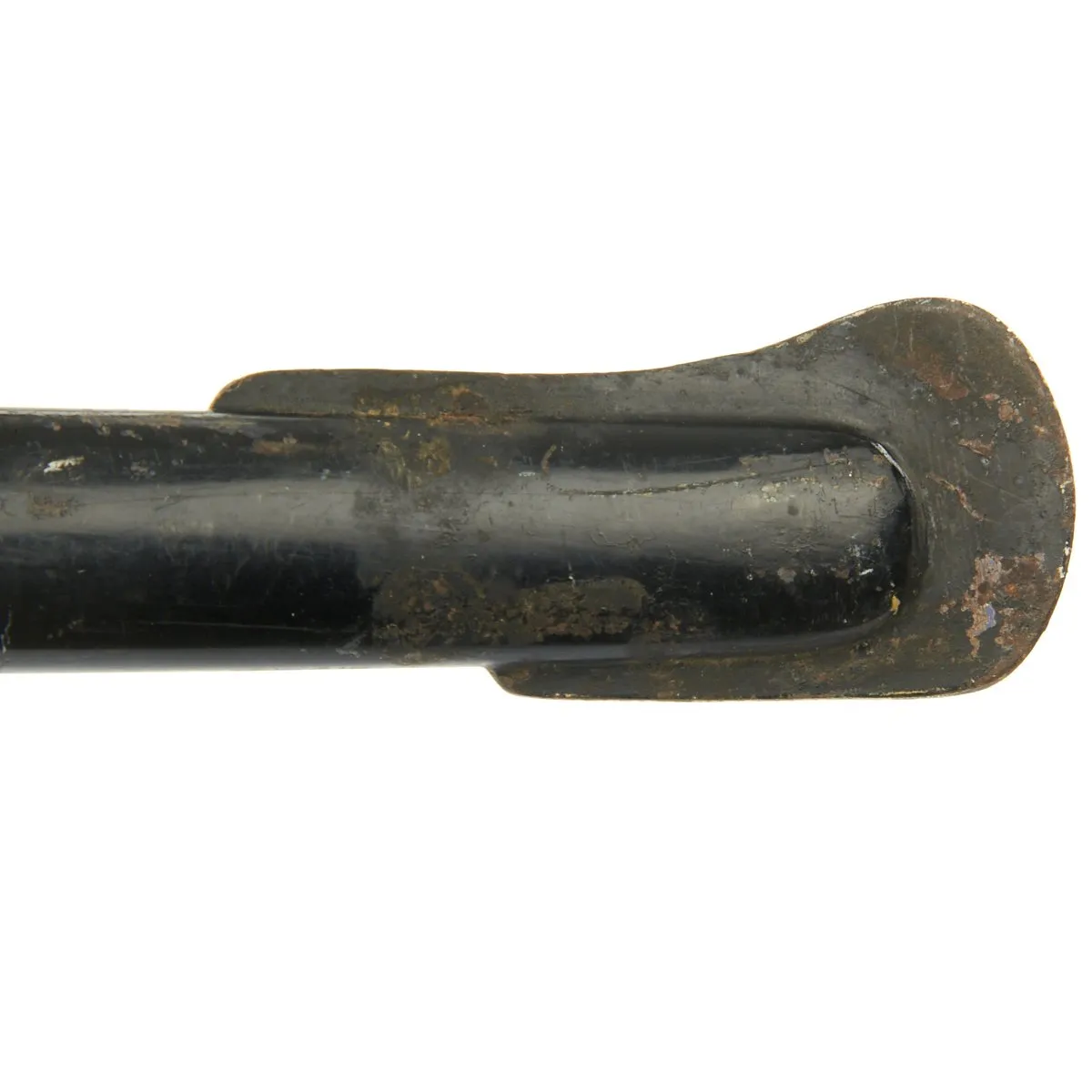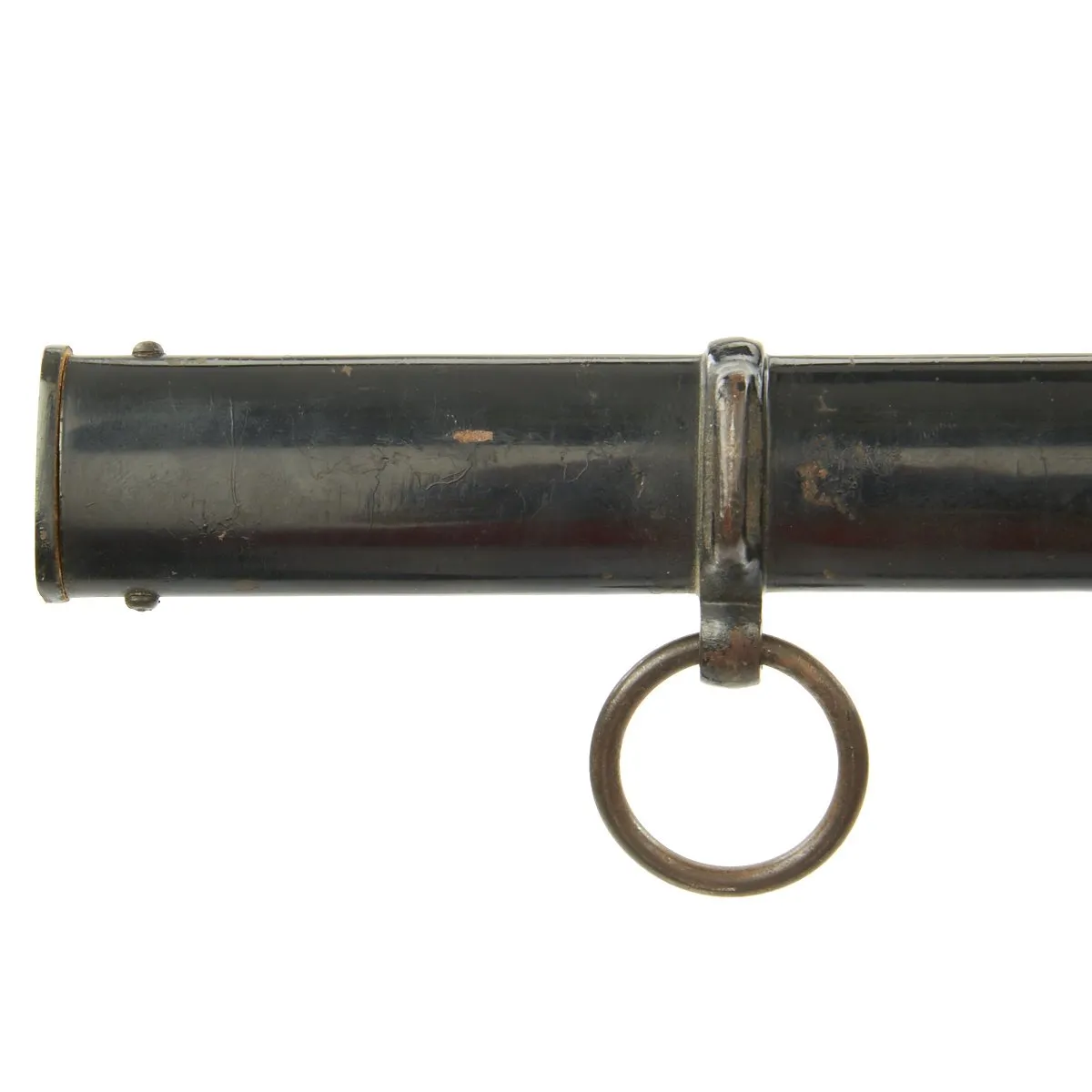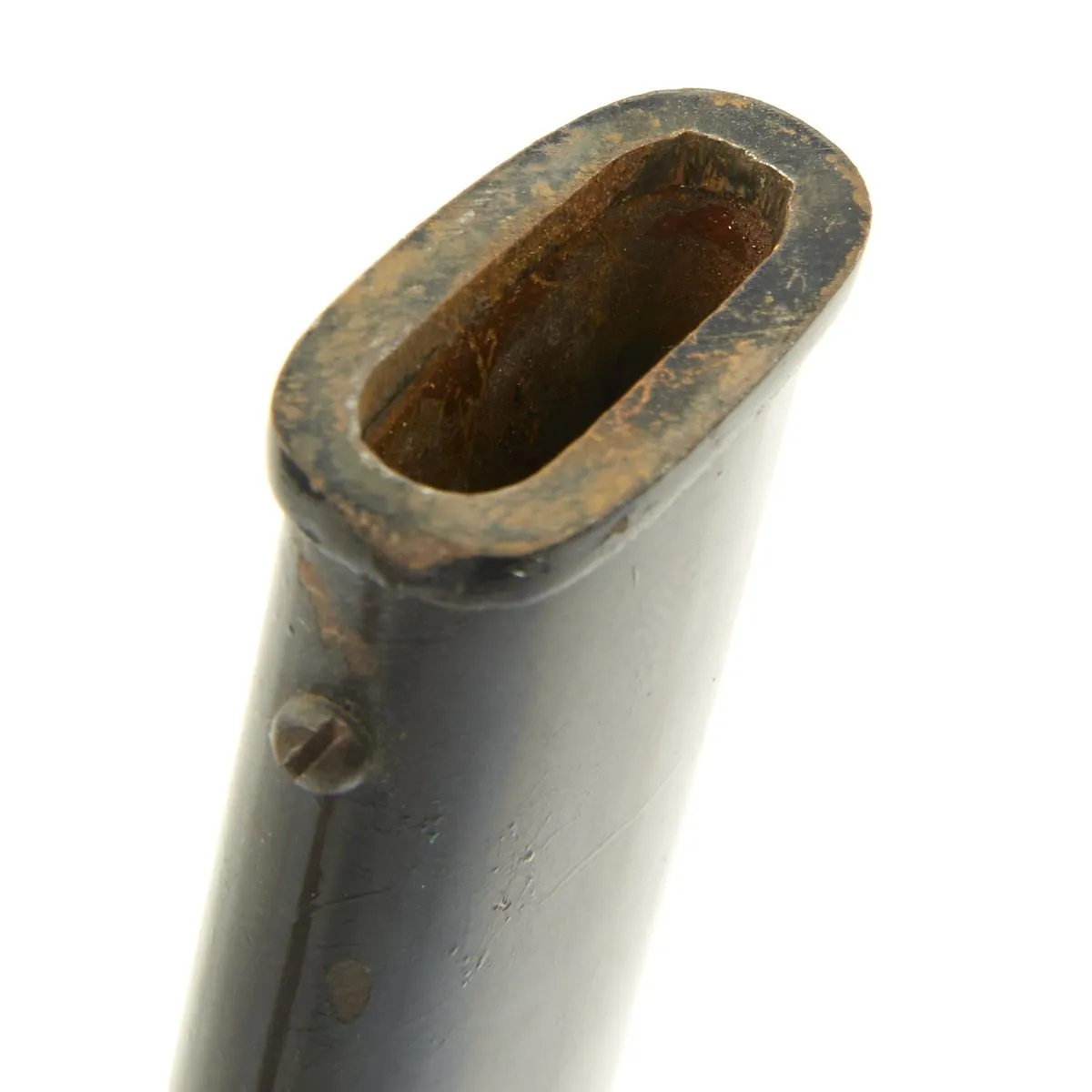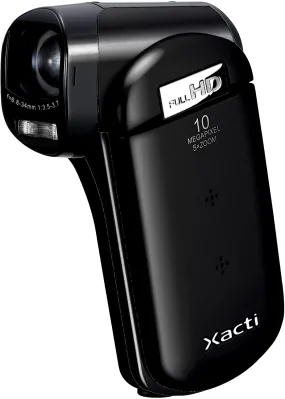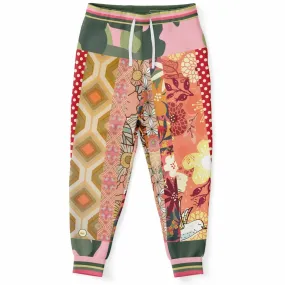Original Item: Only One Available. This Army Dove Head Sword is a very nice example, produced by the renowned Solingen-based firm of Weyersberg Kirschbaum & Co.. The hilt of this example is produced of quality brass base with gilt on the hilt and all of the details are still there, though the gilt finish has faded slightly. The dove head and backstrap, are engraved with oak leaves and acorns, a common decoration used on German ceremonial edged weapons, as well as with other types of foliage. The "flat" P guard repeats this oak leaf motif, as does the ferrule at the top of the grip. There are lots of hand enhancing and many of the backgrounds have received pebbled decoration.
The chappe/langet features a raised out Wehrmacht eagle which shows excellent detail to his beak, eye, breast feathering, wing feathering, talons and mobile clutched swas. The areas around the swas are lightly pebbled. The grip of this example is a black celluloid over a carved wood base. The celluloid is still in perfect bright condition. The grip is wrapped with triple sets of twisted wire, though the wrapping is a bit loose, and has been secured previously with adhesive.
The steel scabbard of this example is straight throughout. The black enamel paint of this scabbard is mostly complete, with some flaking on the drag and on the "out" side of the scabbard. It also has the usual checking and crazing of age, and still retains both throat screws.
The blade is 30 1/2 inches long, with the original leather blade washer is in place. This blade is of highest quality steel and reflects a mirror with its bright nickel finish. This blade is in near full mint condition, which unfortunately makes getting good photographs nearly impossible. The ricasso is stamped with the trademark "Knight's Helmet" logo over W K C, the marking of legendary maker Weyersberg Kirschbaum & Cie of Solingen. Unfortunately the chappe/rainguard completely covers this area, so photographing the logo is impossible.
Overall an excellent example of a German Army Officer Dove Head sword, from a legendary maker.
The German Army (German: Heer, was the land forces component of the Wehrmacht, the German armed forces, from 1935 to 1945. The Wehrmacht also included the Kriegsmarine (Navy) and the Luftwaffe (Air Force). During World War II, a total of about 15 million soldiers served in the German Army, of whom about seven million became casualties. Separate from the army, the Waffen-SS (Armed SS) was a multi-ethnic and multi-national military force of the Third Reich. Growing from three regiments to over 38 divisions during World War II, it served alongside the army but was never formally part of it.
Only 17 months after AH announced publicly the rearmament program, the Army reached its projected goal of 36 divisions. During the autumn of 1937, two more corps were formed. In 1938, four additional corps were formed with the inclusion of the five divisions of the Austrian Army after the Anschluss in March. During the period of its expansion by Adolf AH, the German Army continued to develop concepts pioneered during World War I, combining ground (Heer) and air (Luftwaffe) assets into combined arms teams. Coupled with operational and tactical methods such as encirclements and the "battle of annihilation", the German military managed quick victories in the two initial years of World War II, prompting the use of the word Blitzkrieg (literally lightning war, meaning lightning-fast war) for the techniques used.
The German Army entered the war with a majority of its infantry formations relying on the horse for transportation. The infantry remained foot soldiers throughout the war; artillery also remained primarily horse-drawn. The motorized formations received much attention in the world press in the opening years of the war, and were cited as the main reason for the success of the German invasions of Poland (September 1939), Norway and Denmark (April 1940), Belgium, France and Netherlands (May 1940), Yugoslavia (April 1941) and the early campaigns in the Soviet Union (June 1941). However their motorized and tank formations accounted for only 20% of the Heer's capacity at their peak strength.




